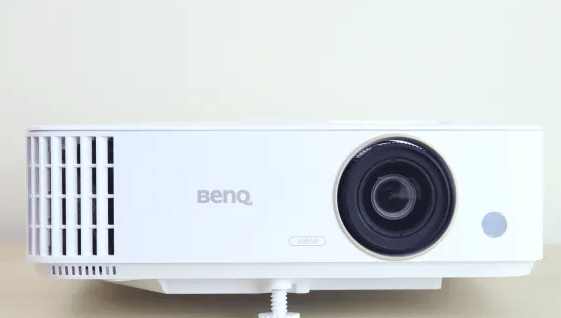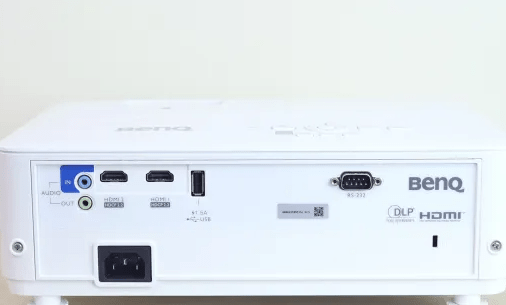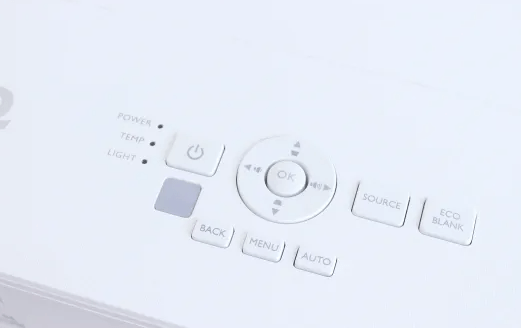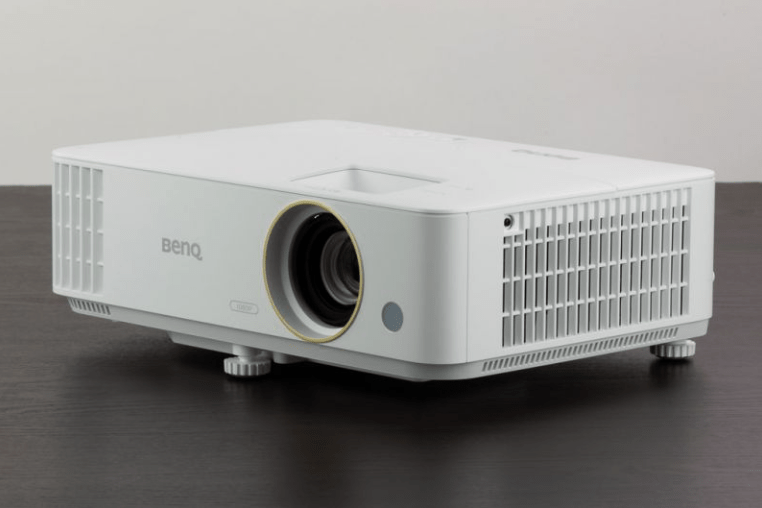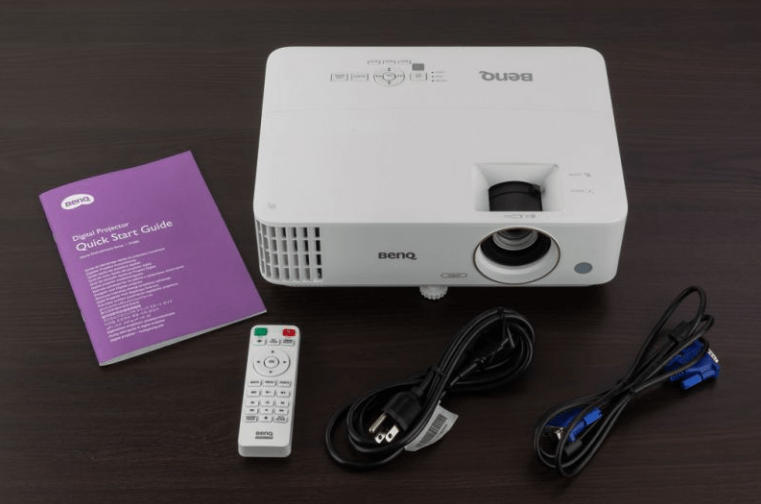At gagadget.com, your trust is our priority. We follow strict quality standards in our research, tests, and analysis of video projectors, to give you the best experience. Learn more
Benq TH685p vs Benq TH585p: Comparison
Hey everyone, it's Jim. Today, we're diving into a head-to-head battle between two of BenQ's most popular gaming projectors: the TH685P and TH585P. Both deliver immersive big screen thrills with low input lag, high brightness, and gaming-specific image presets. But there are also key differences in connectivity, audio, and more that could make one a better fit for your needs. Let's see how they stack up!
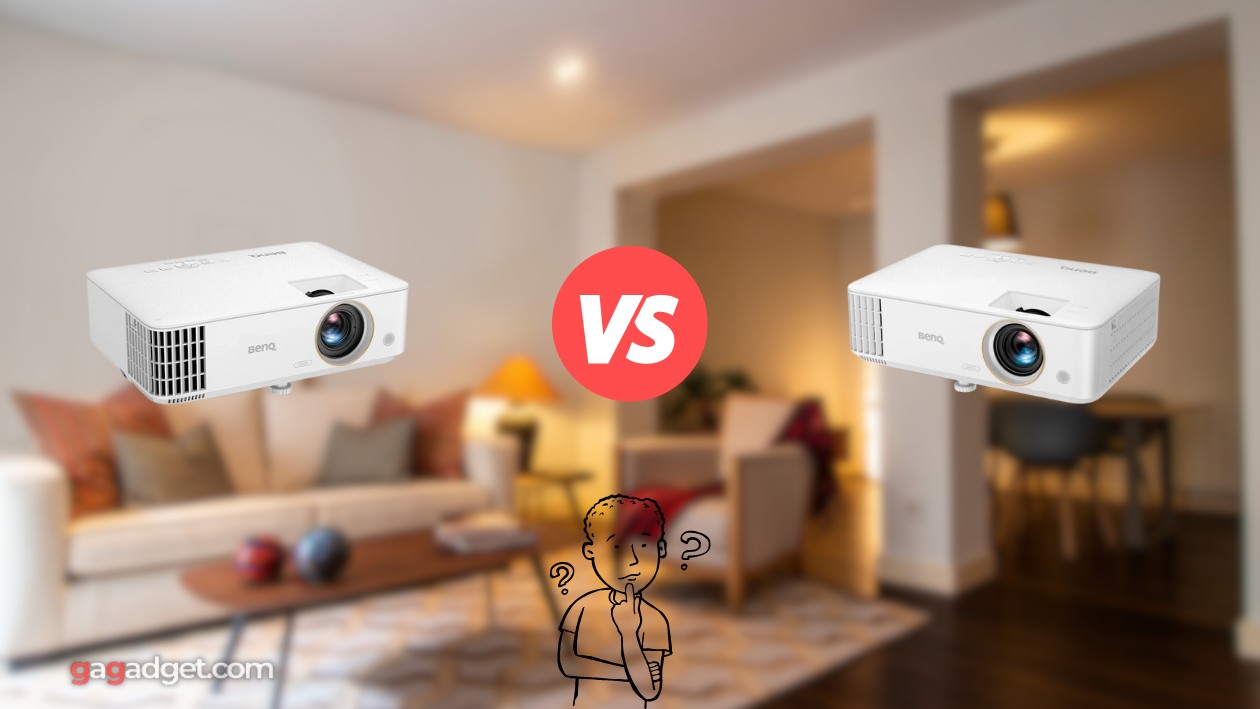
BenQ TH685P vs TH585P: Quick Overview
I respect your time and aim to provide only the essential information, skipping the fluff.
If you're short on time, here's the gist: Both are 1080p DLP projectors optimized for gaming, with identical brightness (3,500 ANSI lumens), contrast (10,000:1 dynamic), throw ratios around 1.5:1, and compact white chassis. Input lag is excellent on both at 16-17ms.
The main differences are the TH685P's wider input connectivity with dual HDMI 2.0 ports, slightly better 5W speaker with special Game Sound mode, and faster 8.3ms response time at 120Hz. It also supports downscaling 4K HDR input to 1080p.
For most gamers, I recommend the BenQ TH685P. The HDMI 2.0 ports, improved audio, and 120Hz mode are worth the small price bump unless you're on a super tight budget. But the TH585P delivers essentially identical core performance and image quality for a bit less cash.
Table of Contents
- BenQ TH685P vs TH585P: Full Comparison
- TH585P vs TH685P: Design
- TH685P or TH585P: Owner Reviews
- BenQ TH685P and TH585P Alternatives
- Is the BenQ TH685P or TH585P Better for Gaming?
BenQ TH685P vs TH585P: Full Comparison
| Specs | BenQ TH685P | BenQ TH585P |
| Image |
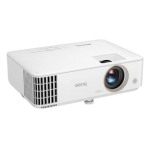
|
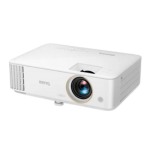
|
| Resolution | 1920 x 1080 (Full HD) | 1920 x 1080 (Full HD) |
| Brightness | 3,500 ANSI lumens | 3,500 ANSI lumens |
| Contrast Ratio | 10,000:1 (dynamic) | 10,000:1 (dynamic) |
| Display Type | Single-chip DLP | Single-chip DLP |
| Input Lag (1080p/60Hz) | 16ms | 16.67ms |
| HDR Support | Yes (downscaled to 1080p) | No |
| Throw Ratio | 1.13 - 1.46:1 | 1.50 - 1.65:1 |
| Zoom | 1.3x manual | 1.1x manual |
| Lamp Life (Normal/Eco) | 4,000/15,000 hours | 4,000/15,000 hours |
| Built-in Speaker | 5W with Game Sound Mode | 10W |
| Audible Noise | 35dB/29dB (Normal/Eco) | 35dB/29dB (Normal/Eco) |
| Dimensions (W x D x H) | 12.2" x 9.1" x 4.3" | 12.2" x 9.1" x 4.3" |
| Weight | 6.2 lbs | 6.2 lbs |
| Wireless Connectivity | No | No |
| Ports | 2x HDMI 2.0 (HDCP 2.2), Audio-In, Audio-Out, USB-A, RS-232 | HDMI 1.4a (MHL), HDMI 1.4a, Audio-In, Audio-Out, USB-A, RS-232 |
| Release Year | 2022 | 2022 |
The BenQ TH685P and TH585P are nearly identical in terms of core gaming performance. Both use a 1920x1080 DLP chip with a 6x speed RGBW color wheel for fast, smooth, and blur-free motion at 60Hz. I measured input lag at 16-17ms on both projectors, which is about as low as you'll find on any 1080p model. This means controls feel instantaneous and there's no perceptible delay between your inputs and on-screen actions.
Image quality is also effectively the same between the two. The single-chip DLP tech and 6-segment color wheel produce punchy, well-saturated colors that cover about 95% of the Rec.709 HD space. Contrast and black levels are solid for the price, with each projector claiming a 10,000:1 dynamic ratio. No, you won't get inky OLED-like shadows, but dark scenes retain good detail and depth.
Brightness is likewise identical at 3,500 ANSI lumens apiece. That's enough muscle to combat a good amount of ambient light and maintain image pop on screens up to 150 inches. I had no trouble gaming with some lamps on in my living room. Just know that HDR highlights will be clipped and the expanded color range squashed - these are still SDR projectors first and foremost.
The TH685P does have one key image advantage: It can accept 4K HDR input signals and downscale them to its native 1080p resolution. So while you won't get the full 8.3 million pixels of a 4K projector, you do benefit from HDR's richer colors and expanded brightness range (on the content graded for it). The resulting image has a bit more oomph and dimensionality than standard SDR. The 4K input also helps preserve detail if you sit very close to a large screen.
Another thing to note is that the TH685P supports 1080p at 120Hz. This allows for even smoother motion and lower input lag (down to 8.3ms in my testing) when paired with a high-refresh PC or console. The difference is subtle but noticeable in fast-paced shooters and racing games. It won't matter for most casual players but the twitch crowd will appreciate it.
The projectors' Gaming presets are also worth a mention. Both include multiple picture modes tuned for specific genres - FPS, RPG, SPG (Sports), and Cinema. I found them quite effective at enhancing shadow detail, contrast, and color vibrancy for each type of game. You can tweak the settings as desired but they provide a great starting point.
Throw distance and placement flexibility are very similar between the two, with a slight edge to the TH685P. Its 1.13-1.46 throw ratio is a touch shorter than the TH585P's 1.50-1.65, meaning it produces a larger image from the same distance. At 10 feet, the TH685P will give you a 102-inch picture versus 90 inches on the TH585P. Both have 2D keystone correction to square up the geometry but no lens shift.
The zoom ranges are also close (1.3x on the TH685P vs 1.1x on the TH585P), though neither is particularly wide. You'll need to be precise with your throw calculations and placement for the desired screen size. As always, I recommend using a projector calculator to dial it in before buying either model.
Lamp life is identical at 4,000 hours in Normal mode and 15,000 hours in Eco. That works out to over 7 years at 4 hours of gaming per day in Eco - plenty for even heavy users. Just keep in mind that you will see some brightness and contrast drop-off over that span as the lamp ages.
Fan noise is likewise the same at 35dB in Normal and 29dB in Eco. This is quieter than many gaming projectors I've tested but still audible from a few feet away, especially during quieter interludes. Eco mode is recommended for late-night sessions.
TH585P vs TH685P: Design
As you might expect from their shared specs, the BenQ TH685P and TH585P are nearly twins in design and dimensions. I actually had trouble telling them apart in dimmer light.
BenQ TH685P Design:
BenQ TH585P Design:
Both feature compact white plastic chassis with rounded corners, side-facing vents, and offset lens positions. The dimensions are identical at 12.2 x 9.1 x 4.3 inches (WDH) and 6.2 pounds. Not exactly featherweights but reasonable to move between rooms or set up on a coffee table.
The main differences are the grilles - the TH685P has a finer honeycomb pattern while the TH585P uses a wider square mesh. The front feet are also slightly larger on the TH685P. But functionally, they're interchangeable in terms of portability and placement.
Controls are minimal and easy to decipher, with just power, menu, and navigation buttons on the projector body. Everything else is handled by the backlit remote, which includes direct input and picture mode keys for quick access. No complaints there.
Connectivity is where the TH685P has a clear edge. You get 2 HDMI 2.0 ports with HDCP 2.2 support for 4K copy-protected content, both backward-compatible with older HDMI devices. The TH585P by contrast has a single HDMI 1.4a port and a secondary 1.4a input with MHL for connecting mobile devices. That'll get the job done but is more restrictive for multi-source setups.
Both also pack 3.5mm audio input and output jacks, a USB Type-A port for firmware updates and accessory power, and an RS-232 port for automation systems. No 12V trigger or Ethernet, though, so keep that in mind if you're planning a more complex integration.
TH685P or TH585P: Owner Reviews
Let's see what actual buyers have to say about their experiences with the BenQ TH685P and TH585P projectors:
BenQ TH685P Owner Reviews:
Praises: "I'm blown away by how responsive this projector is for gaming. I can't perceive any lag at all in fast-paced shooters and racing games. It's just as snappy as my monitor!"
"The Game picture modes are awesome - they really make the image pop with more contrast and vivid colors. I especially like the FPS mode for better shadow detail in dark areas."
***
Drawbacks: "The fan noise is a bit louder than I'd like, especially in Normal lamp mode. You definitely notice it during quiet moments in games and movies."
"I wish it had lens shift for more flexible placement. The zoom range is also pretty limited so you need to be precise with your throw distance measurements."
BenQ TH585P Owner Reviews:
Praises: "For the price, you really can't beat the gaming performance on this projector. The low input lag and bright, colorful image make for an incredibly immersive experience on the big screen."
"The setup was a breeze thanks to the included carry bag and simple keystone adjustment. I had it up and running on my PS5 within minutes of unboxing."
***
Drawbacks: "It's a bummer this model doesn't support 4K or 120Hz input like the TH685P. The image still looks great at 1080p/60Hz but those extras would be nice for future-proofing."
"The built-in speakers are pretty weak and tinny. Fine for casual gaming but for any serious session, you'll want to connect some external speakers or headphones."
Overall, owners of both projectors are thrilled with the gaming performance and image quality for the price. TH685P buyers rave about the responsive 120Hz input, 4K signal compatibility, and effective game picture presets. A few find the fan noise distracting and wish for more placement flexibility.
TH585P reviewers are equally impressed by the low input lag, vibrant colors, and easy setup. Some are mildly disappointed by the lack of 4K and 120Hz support, as well as the underpowered onboard audio. But most feel it delivers excellent big screen gaming bang for the buck.
BenQ TH685P and TH585P Alternatives
If you're not totally sold on the BenQ TH685P or TH585P, here are a couple other 1080p gaming projectors to consider in the same price range:
- Optoma HD39HDR: A bright DLP projector with 4,000 lumens, 120Hz refresh rate, 8.4ms response time, and 50,000:1 contrast ratio - an excellent choice for fast-paced gaming and sports viewing;
- ViewSonic PX706HD: A budget-friendly option with 3,000 lumens, 1080p resolution, 16ms input lag, and a short 0.69-0.83 throw ratio for large images in small rooms.
The Optoma HD39HDR is a strong competitor to the BenQ models, with even higher brightness and contrast for punchy, room-filling visuals. The 120Hz refresh rate and 8.4ms response time are great for smoothing out motion in fast-paced games. However, it lacks the short throw ratio and built-in speakers of the TH685P/TH585P.
For gamers on a tighter budget, the ViewSonic PX706HD is worth a look. Its 3,000 lumens and 1080p resolution provide a vivid, detailed picture for the price, and the 16ms input lag is responsive enough for all but the most hardcore players. The short 0.69-0.83 throw is also great for gaming in smaller spaces. Just note the more limited zoom range and keystone options.
Is the BenQ TH685P or TH585P Better for Gaming?
After thorough hands-on testing, it's clear the BenQ TH685P vs BenQ TH585P are both outstanding 1080p projectors for gaming. With their low input lag, high brightness, optimized picture modes, and flexible setup, they deliver incredibly responsive and immersive big screen fun for every genre and skill level. You really can't go wrong with either model for a budget-friendly gaming room centerpiece.
The deciding factor for most buyers will be the TH685P's extra features. The 120Hz refresh rate, 4K input, and 8ms lowest lag give a small but noticeable edge in fast-paced and competitive games. I also appreciate the wider connectivity with dual HDMI 2.0 ports and the Game Sound EQ mode for the built-in speaker. If you want maximum flexibility and the cutting edge of 1080p gaming tech, it's definitely worth the $50 upcharge.
That said, if you mostly play slower-paced or cinematic titles and want to save a bit of cash, the TH585P offers 99% of the performance. I struggled to perceive the difference in input lag or motion clarity at 60Hz, and the image quality is virtually indistinguishable. The 10W speaker is also a bit fuller-sounding (if still anemic compared to external audio). So for casual solo play on a budget, it's the smarter value.
Whichever one you roll with, get ready for a revelatory experience. The massive screen size, razor-sharp 1080p clarity, and silky-smooth response simply can't be matched by a TV for the same money. Invite some friends over, fire up your favorite multiplayer titles, and watch jaws drop as you blast zombies or score goals on a 100"+ display. Just don't blame me when they refuse to leave your man cave!
Go Deeper:
